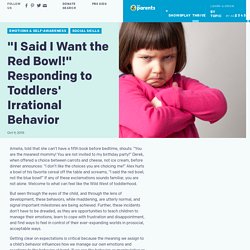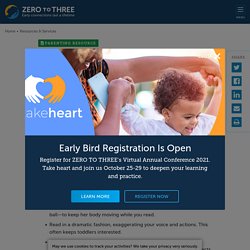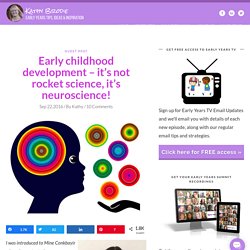

Diferencias entre la Educación Tradicional y la Basada en Competencias. Según la zonas de España en las que os encontréis estaréis de vacaciones, o no. Por ello, una entrada sencilla (no simple) con cierta enjundia. Todo el mundo habla de la educación basada en competencias como la gran revolución de los últimos años en la educación, pero no estoy seguro de que todos lo hagan por los mismos motivos. Incluso hay voces bastante críticas respecto al planteamiento de las mismas en la educación general. Una revisión de este asunto puede verse en este monográfico de Bordón, coordinado por el recientemente fallecido profesor de la Orden. Lo esencial de la educación basada en competencias no son, a mi modesto entender, las competencias en sí mismas, sino el enfoque global de la enseñanza que implica en diversas dimensiones críticas: el rol del profesor y el alumno; el aprendizaje dentro y fuera de la escuela; el papel esencial de la evaluación y, cómo no, el enfoque basado en el dominio o mastery learning.
Espero que os ayude en vuestra reflexión. P.D. Facebook Live - Understanding IELTS: Writing - British Council. Early Childhood Education 5th Edition: Hodder Education. Suitable for a wide range of Early Years and Childcare qualifications, this new edition of Tina Bruce's classic text will help build students' practical skills by drawing on the history of Early Years and the most recent educational theories.

Now in its 5th edition, this trusted resource written by experienced and respected childcare author Tina Bruce has been updated to include the most recent theories and research, including new studies on language acquisition, attachment theory and self-regulation. Early Childhood Education 5th Edition: Hodder Education. Observation, Assessment and Planning in The Early Years - Bringing it all together: Amazon.es: Brodie, Kathy: Libros en idiomas extranjeros. How Are Happiness and Learning Connected? Practical tips. By Opal Dunn, educational consultant and author Introduction Young children learn English differently from most adults.

Most have an innate ability to pick up English while taking part in activities, by making sense of what they are doing and picking up the adult’s language that accompanies the activity. You can find out more in the British Council booklet ‘How young children learn English as another language’, also available on the parents pages of the LearnEnglish Kids website. Planned English sessions. Want to know more? - English in Early Childhood - British Council.
The Art of Control. Executive function — our ability to remember and use what we know, defeat our unproductive impulses, and switch gears and adjust to new demands — is increasingly understood as a key element not just of learning but of lifelong success. Researchers at the Center on the Developing Child at Harvard University describe executive function as an air traffic control system for the mind — helping us manage streams of information, revise plans, stay organized, filter out distractions, cope with stress, and make healthy decisions. How to help your child learn English with YouTube videos. Tracey Chapelton, education consultant and materials writer, has some advice for parents of young English learners, whose home language might not be English. To learn a language we need a lot of exposure to it.
YouTube is beneficial if you are not a fluent English speaker, and want a more fluent model of English for your child. Helped along by the visuals of their favourite cartoon, children can watch their favourite characters involved in adventures, while absorbing the language. Repetition is also important for language learning. It helps us remember important words and expressions.
Practical tips. Carol Dweck: The power of believing that you can improve. How can parents and teachers best educate young children? What principles can both teachers and parents bring to the education of very young children? Gillian Craig, who was part of the Learning Time with Shaun and Timmy writing team, explains. As teachers and parents, we follow certain principles in our roles. Often though, these principles overlap and all we need to do is recognise and reinforce these areas. Ask (the right) questions. Ey besd. B480 Special Need Publication A4 V5 Final MR. Neurodiversity TfS online conference. Teaching English to learners with Special Educational Needs (SENs) – Myths and realities. 2Bbellybreathhome. Schemas in Children’s Play - N a t u r e P l a y. Written by Clare CaroSchemas in Children’s Play are such an important concept when it comes to the development of our children that it’s worth taking the time to understand them so you can facilitate them when you see them.What are these schemas?

Well it’s really a fancy word for the urges that children have to do things like climb, throw things and hide in small places. They appear through play; perhaps it is the way they choose to do things, or what they desperately need to do out of the blue! "I Said I Want the Red Bowl!" Responding to… Amelia, told that she can’t have a fifth book before bedtime, shouts: “You are the meanest mommy!

You are not invited to my birthday party!” Derek, when offered a choice between carrots and cheese, not ice cream, before dinner announces: “I don’t like the choices you are choicing me!” Alex hurls a bowl of his favorite cereal off the table and screams, “I said the red bowl, not the blue bowl!” If any of these exclamations sounds familiar, you are not alone.
Welcome to what can feel like the Wild West of toddlerhood. Does my toddler have a short attention span because she won’t sit still for a story? A: It is perfectly normal for toddlers to not sit still very long—period.

Most don’t like to stay in one place for long now that they can explore in so many new ways—by running, jumping, and climbing. So, an adult’s idea of snuggling on the couch to hear a story may not be the same idea a toddler has for story-time. You may only be able to read or talk about a few pages in a book at a time. Here are some ways to engage active children in reading: Read a book at snack times when your child may be more likely to sit for longer.Offer your child a small toy to hold in her hand—such as a squishy ball—to keep her body moving while you read.Read in a dramatic fashion, exaggerating your voice and actions.
The Power of Evening Routines. The word “structure” can evoke less than positive associations. It suggests constraints, which are never a good thing, right? Wrong. It turns out that everyone benefits from a certain amount of daily structure, so long as that structure is pleasant, productive, and meaningful. How do you speak 'Motherese'? News BBC News Navigation Sections. The Woman Who Changed Her Brain: Barbara Arrowsmith-Young at TEDxToronto. How baby brains develop. Early childhood development – it’s not rocket science, it’s neuroscience!
I was introduced to Mine Conkbayir when she contacted me about neuroscience informing early years practice, which I think is such an exciting, and growing, area of study.

So I was very enthusiastic when she offered to do a guest post on this subject. Here she discusses how neuroscience can add another dimension to our understanding of child development: Like many individuals in this increasingly frantic world, I’m often busy juggling my responsibilities as a parent while I work and continue my studies – a very exciting journey as I try to achieve my PhD in early childhood education and neuroscience. Having been a lecturer across a range of child care and education qualifications for the past 14 years, I continue to be bewildered by the lack of consistently embedded teaching of neuroscience and early brain development across these qualifications. You speak with an accent. I don’t.
Accents are things that only other people have. They are, by extension, things that you don’t want to have. Accents are, in short, shortcomings. This is why, if someone tells you that “you speak with no accent”, you can be sure of two things: that you have received words of praise indeed; and that you speak with the same accent as that person. FAQ: Raising Bilingual Children. Why want bilingual children? There are many reasons, but the two most common are: 1) The parents speak different languages (say, an American woman and a Turkish man). 2) The parents speak the same language, but live in a community where most people speak something else (say, a Korean couple living in the USA).
In the first case, both the mother and father may want to be able to use their own language when talking to their children. Let's Talk. Multilingual Preschoolers. It’s amazing how young children learn to converse with others.